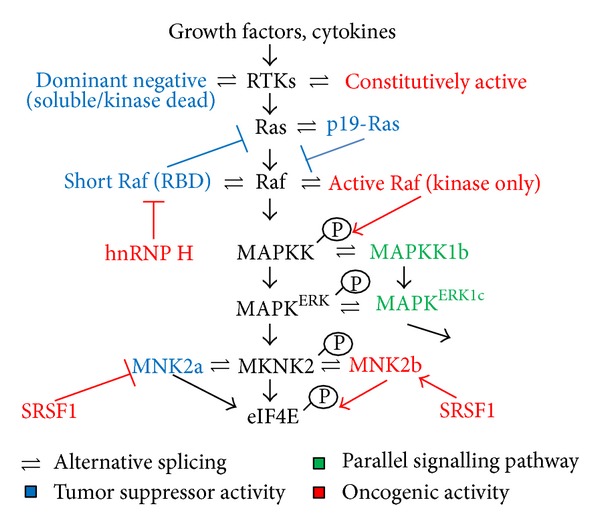Figure 1.

Alternative splicing regulation of the Ras-MAPK pathway. Growth factors and cytokines activate receptor tyrosine kinases (RTKs) which in turn lead to activation of Ras. RTKs can be alternatively spliced to generate soluble truncated isoforms which act in a dominant-negative manner or constitutively active isoforms which are active regardless of ligand binding. Ras can be alternatively spliced to generate p19-Ras which cannot activate its downstream effector Raf. GTP-bound p21-Ras activates A-, B-, and C-Raf which can be alternatively spliced to generate inactive dominant-negative isoforms containing only the Ras binding domain (RBD) or constitutively active isoforms containing only the kinase domain. Oncogenic splicing factor hnRNP H inhibits the production of dominant-negative A-Raf isoforms. Raf phosphorylates MAPKK (MEK) which in turn phosphorylates MAPK-ERK. MAPKK1 and ERK1 can generate MAPKK1b and ERK1c, respectively, by alternative splicing to generate a parallel signalling pathway. MAPK-ERK can phosphorylate MNK2, which is alternatively spliced and regulated by the oncogenic splicing factor SRSF1. SRSF1 upregulates a prooncogenic Mnk2b isoform and reduces Mnk2a isoform of this kinase. Blue: tumor suppressors, red: oncogenes, and green: parallel pathway.
